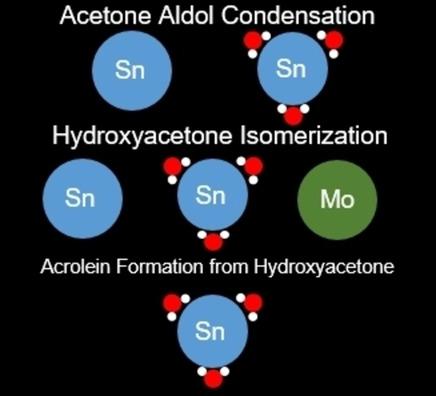当前位置:
X-MOL 学术
›
ChemCatChem
›
论文详情
Our official English website, www.x-mol.net, welcomes your feedback! (Note: you will need to create a separate account there.)
In‐situ IR Spectroscopy Study of Reactions of C3 Oxygenates on Heteroatom (Sn, Mo, and W) doped BEA Zeolites and the Effect of Co‐adsorbed Water
ChemCatChem ( IF 4.5 ) Pub Date : 2020-11-05 , DOI: 10.1002/cctc.202001424 Sean Najmi 1 , Jungseob So 1 , Eli Stavitski 2 , William P. McDermott 3 , Yimeng Lyu 1 , Sam P. Burt 3 , Ive Hermans 3 , David S. Sholl 1 , Carsten Sievers 1
ChemCatChem ( IF 4.5 ) Pub Date : 2020-11-05 , DOI: 10.1002/cctc.202001424 Sean Najmi 1 , Jungseob So 1 , Eli Stavitski 2 , William P. McDermott 3 , Yimeng Lyu 1 , Sam P. Burt 3 , Ive Hermans 3 , David S. Sholl 1 , Carsten Sievers 1
Affiliation

|
The reactions of acetone and hydroxyacetone over heteroatom doped BEA zeolites (Sn, Mo, and W) in the presence and absence of H2O vapor are investigated using infrared spectroscopy. Acetone is converted to mesityl oxide over Sn‐BEA exclusively. At higher temperatures, larger oxygenates such as phorones, aromatics, and coke form. The presence of co‐adsorbed water in Sn‐BEA suppresses tautomerization. H2O vapor is also beneficial for minimizing coke formation at high temperatures. Hydroxyacetone is converted into 2‐hydroxypropanal over Sn‐BEA, exhibiting high affinity to Sn sites up to 400 °C. Sn‐BEA catalyzes conversion of hydroxyacetone into the enol in the absence of H2O, but exposure to H2O induces the formation of 2‐hydroxypropanal and subsequent conversion to acrolein. The Lewis acid descriptors are used to rationalize the reaction pathways. For the isomerization of hydroxyacetone into 2‐hydroxypropanal, the hardness of acid sites influences the reaction and correlates with the overall Lewis acidity of the catalysts, respectively. However, the size of the exchanged metal significantly affects aldol condensation, where keto and enol forms of acetone adsorb to active sites simultaneously.
更新日期:2021-01-14



























 京公网安备 11010802027423号
京公网安备 11010802027423号